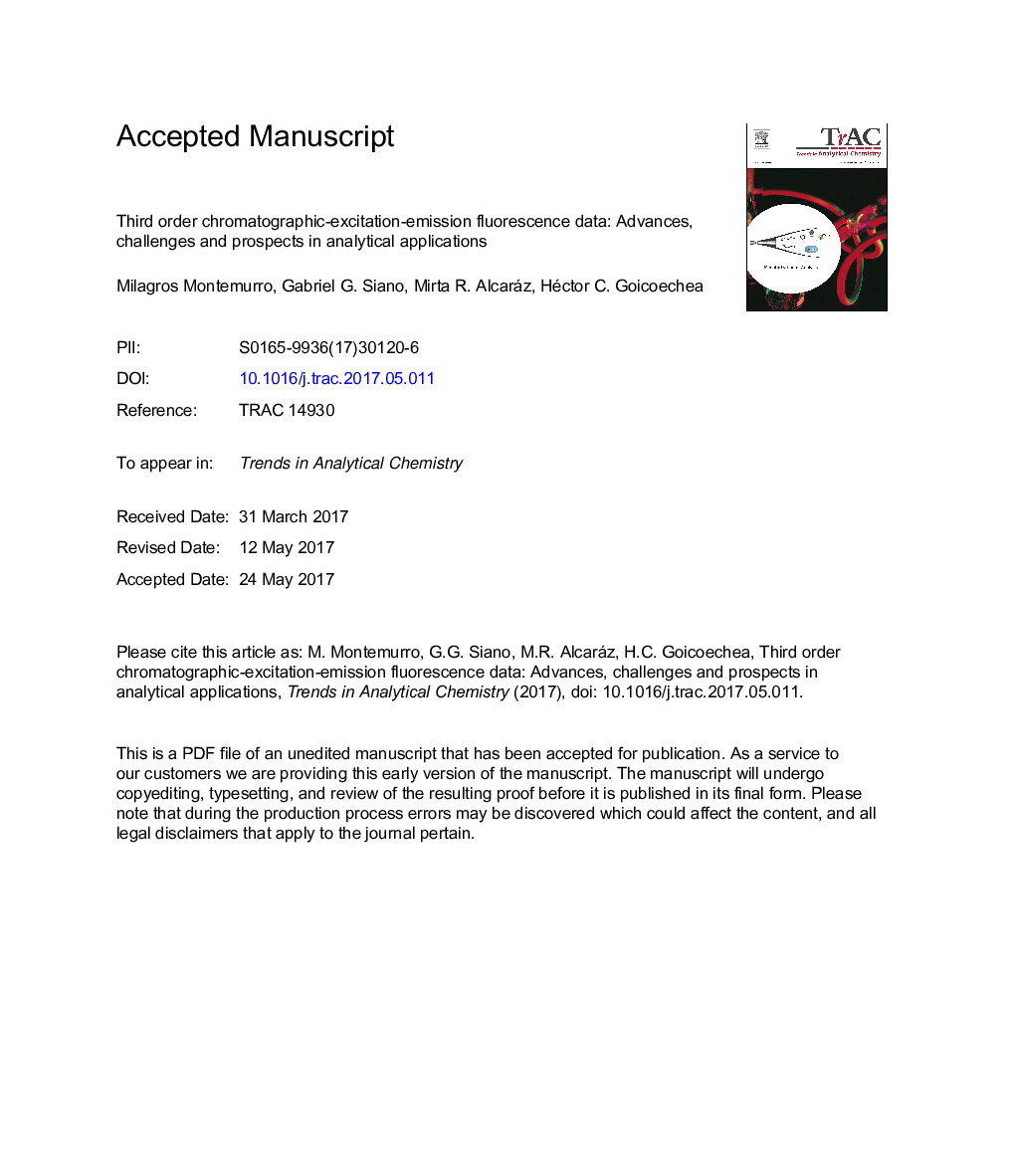| Article ID | Journal | Published Year | Pages | File Type |
|---|---|---|---|---|
| 5141601 | TrAC Trends in Analytical Chemistry | 2017 | 44 Pages |
Abstract
Three analytical methodologies for the generation of third-order liquid chromatography-excitation-emission fluorescence matrix (LC-EEM) data are presented. Instrumental requirements were evaluated considering equipment complexity, costs and accessibility. A descriptive analysis of the generated data was done along trilinearity concept and chemometric resolution. For trilinear decomposition, PARallel FACtor Analysis (PARAFAC) model was utilized. Hence, possible effects that are caused in the resolution due to loss of trilinearity are detailed. Then, several data pre-processing and processing alternatives are proposed in order to successfully overcome the drawbacks that can be present in the chemometric resolution. Additionally, a reported analytical method for the determination of three analytes is presented to showcase the potential of the methodology to generate third-order LC-EEM data with quantitative aims. For data modelling, Augmented PARAFAC (APARAFAC) and Multivariate Curve Resolution-Alternating Least Squares (MCR-ALS) were used. Both algorithms demonstrated to be able to bear non-quadrilinear data in a multi-set analysis.
Related Topics
Physical Sciences and Engineering
Chemistry
Analytical Chemistry
Authors
Milagros Montemurro, Gabriel G. Siano, Mirta R. Alcaráz, Héctor C. Goicoechea,
